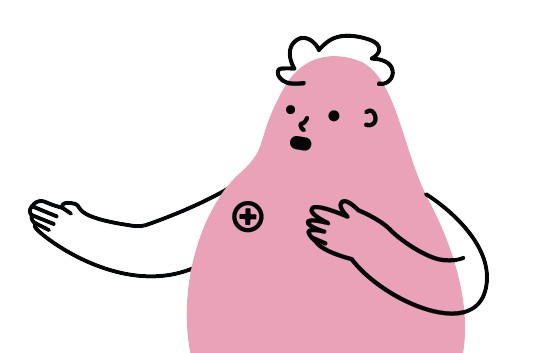Opioid Education Toolkit
We have developed a collection of illustrations and templates for healthcare professionals or design practitioners to use in creating instructions and information on naloxone and opioid poisoning. It offers guidance for people who might encounter an opioid overdose. It is not designed to be used as a substitute for intramuscular or nasal naloxone training.
There are different sections that can be downloaded.
Templates of designs
Illustrations of Characters
Illustrations of Actions
Illustrations of Items,
can be downloaded in pdf. They can be used as they are, or modified through Adobe Illustrator. Templates can be downloaded in pdf and can be edited through Adobe InDesign or Google docs.
We have developed customizable templates for two posters, one brochure and one wallet card to date:
Poster - Care for Opioid Poisoning
Poster - Signs and Symptoms
Brochure
Wallet Card
Our development of the instructions
is based on our findings drawn from:
1
3
4
5
80 percent of participants voted clear and simple
to be the most important theme to consider while designing for opioid poisoning materials.
Watch the Package Assembly
An extensive literature review of grey literature accessible from public websites in Canada. Current provincial and territorial harm reduction documents in Canada, relative to how well these documents reflect internationally recognized principles and attributes of effective visual communication design principles
Four Co-design focus group testing
2 Surveys with over 200 participants
Usability testing (to be completed in Spring 2025)
When asked to compare option 1 and option 2, they said:
“Option 2 medically shows sign and symptoms. In option 1 you can't tell if lips are blue, pupils are really small, and pale skin is not possible to show if the illustration is pink”
“When I'm teaching someone I care if it's gender sensitive, and culturally sensitive, but more importantly to be able to teach them where to inject that is not possible to be with option 1. Option 2 is a lot more clear specially if the person is dealing with cognitive disabilities, or from different age groups”
Sooner Toolkit
2
Care for Opioid Poisoning
Poster
Sign and Symptoms
Poster
Care for opioid poisoning
Brochure
We employed an iterative search and screening process to generate 54 provincial
and territorial harm reduction policy documents that were current to the end of 2015. Documents were content-analyzed using a deductive coding framework comprising
17 indicators that assessed the quality of effective communication design principles relative to how well they described key population and program aspects of a harm reduction approach.
“Consider visuals - can this be understood by an ESL or “individuals of all education levels”
“There is an opportunity to have a voice that says: this isn't scary, you can handle this.”
“to ensure the widest abilities (and challenges) of persons using naloxone can understand what to do”
“Emergency scenario - important information needs to be conveyed quickly and accurately”
“easy to see, easy to find, easy to understand”
“it is very neutral and doesn't make you think of a specific gender, stigma, culture, etc.”
“non limiting, bright colours to catch attention”
“concerned that it might be making a caricature of people who use drugs”
The project aims to design an evidence-based Overdose Education and Naloxone Distribution (OEND) first aid toolkit, to be offered in a range of settings, that allows for ultra-brief training of overdose first aid for potential lay responders with nasal naloxone. Take Home Naloxone (THN) kits are specially designed packages containing nasal naloxone sprays, a medication used to rapidly reverse opioid overdose with ultra-brief training (animation) to guide individuals through the steps of administering naloxone effectively. At the heart of the design philosophy is the commitment to de-stigmatizing overdose response. We understand the importance of creating materials that feel welcoming and accessible to everyone. That's why our packaging design references the iconography, typography, and form of traditional first aid materials, emphasizing care and assistance over stigma. The toolkit is an open-access THN kit designed to empower individuals and communities to respond to opioid overdose emergencies, providing life-saving, accessible, and stigma-free support.
Watch the Rapid Training Video
When asked what clear and simple meant, they said:













